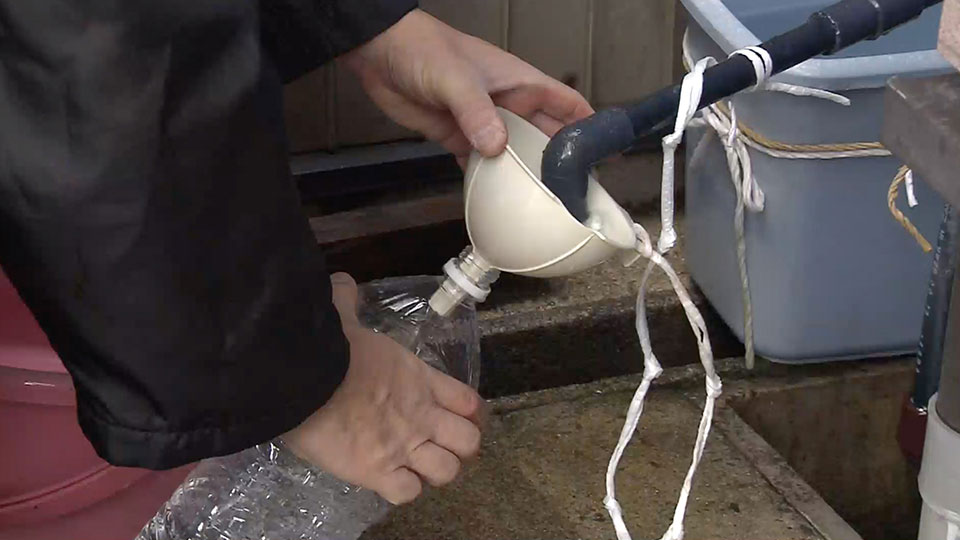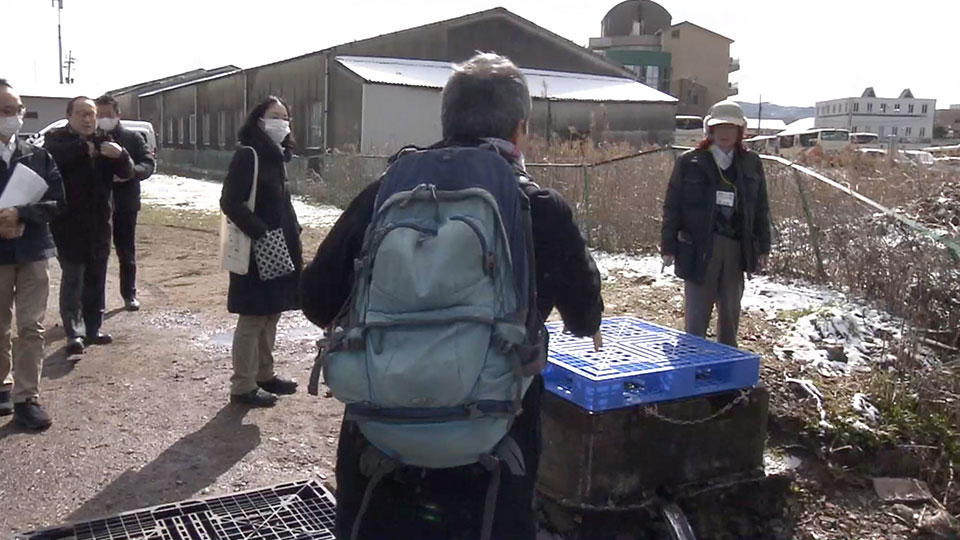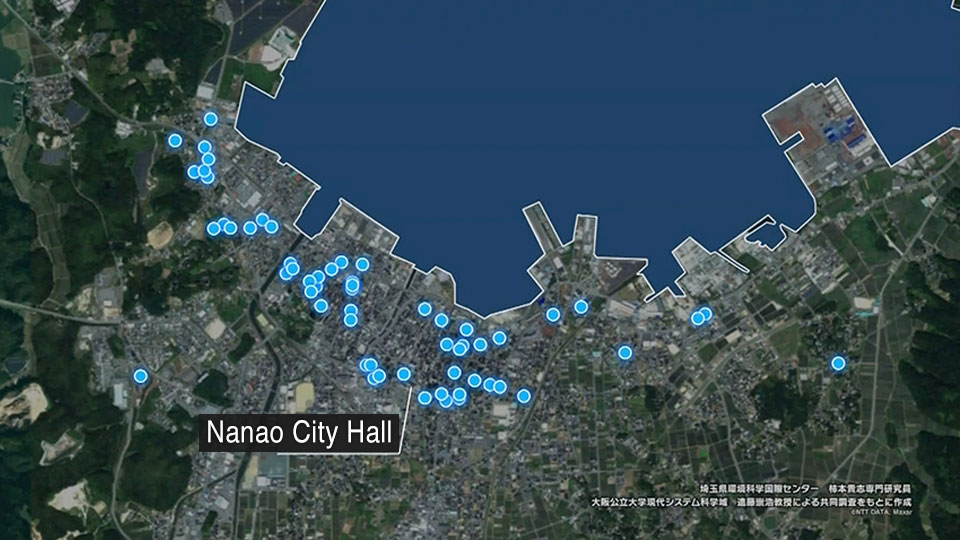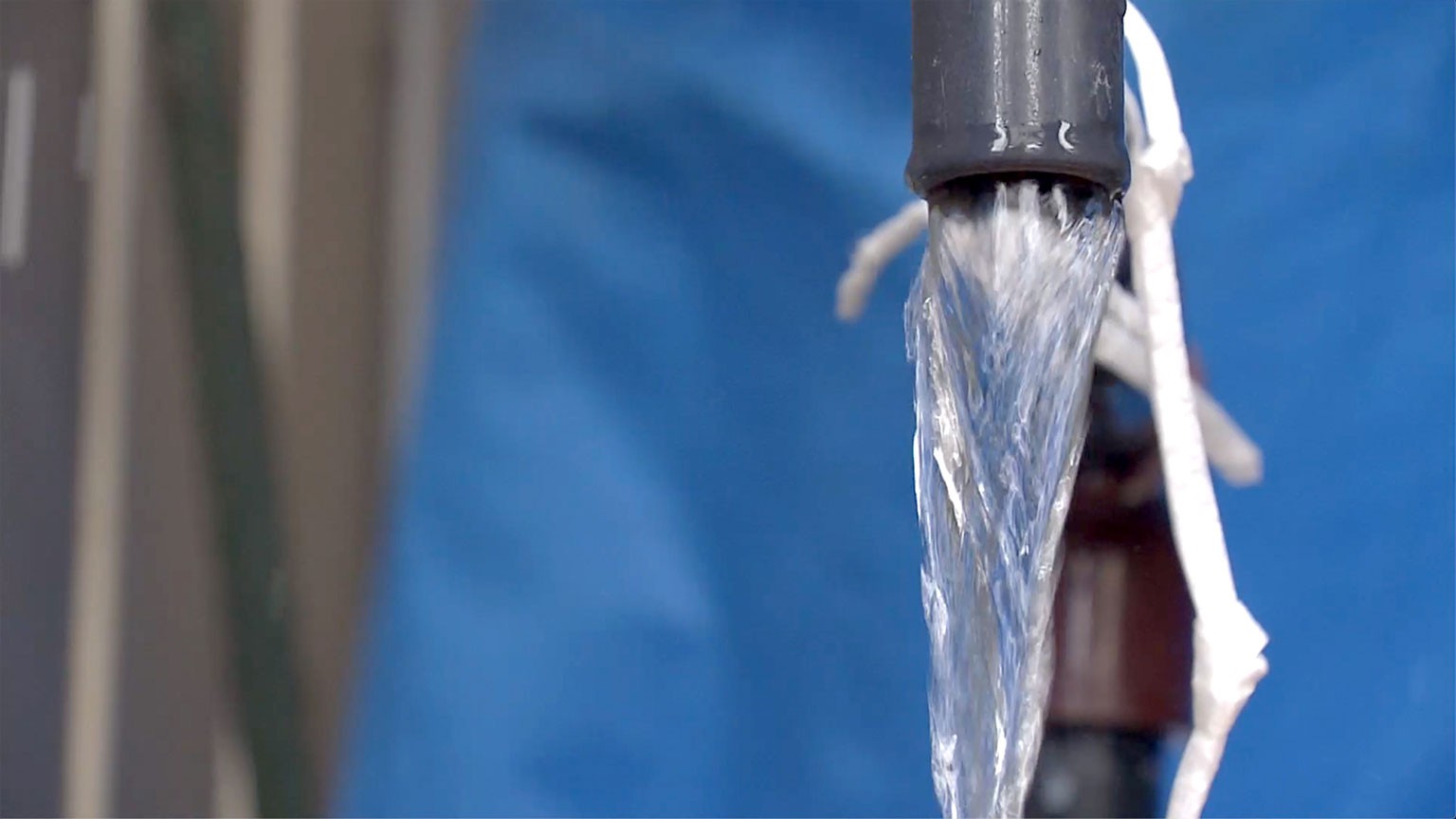Residents thankful for wells
Tanetani Tamon lives in the city of Nanao and has not had running water since New Year's Day.
Since then, he has been drawing water from a family well that his ancestors relied on for their home and a noodle factory they ran.
Tanetani says he needs to fill at least five 2-liter plastic bottles to flush a toilet, and the effort has taught him to appreciate the importance of a resource he used to take for granted.
"My grandmother, who died at the age of 92, apparently told my mother to keep the well 'alive,'" he says. "So we have to thank our ancestors."

Well water proves critical
Professor Endo Takahiro of Osaka Metropolitan University is an expert in water resources and post-disaster water management. He and a team of researchers have been in Nanao City to survey the situation post-quake.
Endo says people normally need 3 liters of water a day for drinking, but they need up to 10 times that amount for all their daily needs.

In Nanao they found that wells were proving critical for many people. In communities with a large volume of well water, people were using it to do laundry. And businesses that own wells have been giving the local community access to their water.
A tour bus company based in the area uses well water to wash its vehicles. The day after the earthquake, the company used social media to tell people in the area that water was available around the clock. The company's managing director, Kinoshita Koki, says they have received many words of gratitude.
Advantages of well water
Endo and his researchers found 59 wells being used by people affected by the disaster in central Nanao alone.

Endo says wells have many advantages at times of disaster, allowing swift, low-cost access to water for a large number of people.
Preparing for next disaster
But his team also found that opening wells up to the wider community had caused problems in some areas.
Sakakibara Ikuko runs an udon restaurant in Nanao and uses well water in her cooking. Two days after the initial earthquake, she told locals they were welcome to collect water from a tap in her parking lot. Many people took her up on that offer.
The restaurant owner says it led to noise all night, with car doors opening and closing and what sounded like vessels being dropped. She says her neighbors began to complain.
Endo says problems like this arise when there is only one well to serve a large community. He says local authorities should designate multiple wells for disaster situations.
